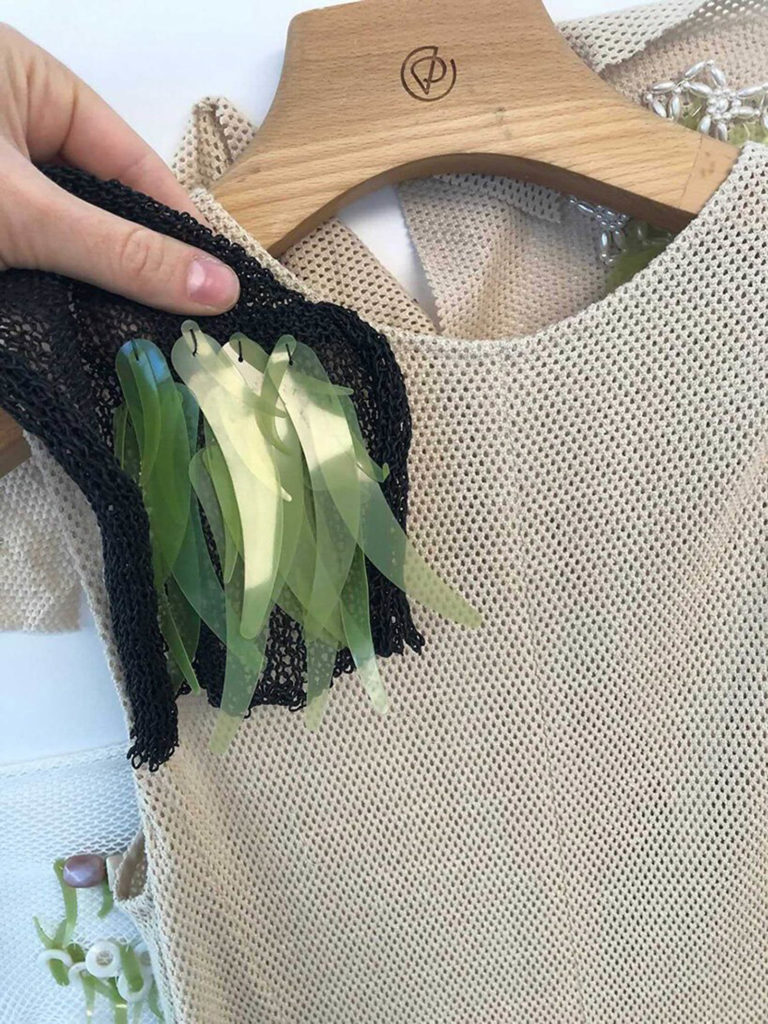
Designer Phillip Lim has partnered with New York-based industrial designer Charlotte McCurdy to create a dress made of a biodegradable base layer and covered in algae-grown bioplastic sequins.
Dezeen.com reports that the collaboration is part of the One X One project, an incubator organized by the Slow Factory Foundation that pairs high-profile designers with sustainability innovators.
“Sustainability in fashion is not just about organic, natural or recycled textiles,” McCurdy told Dezeen. “If we’re going to get to zero on our emissions, we need to be thinking about how to replace the 60 percent of textiles that are currently made of fossil fuels.”
The challenge was to find a way to turn this experimental, non-woven material into a luxury garment for Lim’s fashion label, 3.1 Phillip Lim. Since the bioplastic comes in the form of sheets rather than threads, the duo settled on sequins as the best application while simultaneously replacing a common plastic product.
“If you’re a designer and the rest of your product offering involves deeply, thoughtfully considered sourcing of renewable cottons and sustainable materials, the moment you go to make something with sequins you’re reaching for polyester,” McCurdy explained. (Polyester is a petroleum-based textile.)
McCurdy’s bioplastic sheets are created by exposing algae to heat, encouraging it to bind together before it is poured into a custom-made mould to cure and solidify. To match the characteristic shine and stiffness of traditional sequins, McCurdy cast the material in a deeper mould made of glass that transfers its reflective finish onto the final product.
“The majority of our modern dyes and pigments are petrochemical in origin,” she said. “But we had a huge, rich vocabulary of color before the Industrial Revolution that was not taking fossil fuel out of the ground, so I looked into traditional approaches to producing oil paints, which involved mineral pigments.”
The sequins were sent to the 3.1 Phillip Lim studio, where the team attached them to a base mesh of cellulose fiber derived from seaweed and bamboo.
McCurdy sees their creation as a “concept dress” that offers a vision of what a zero-emissions future could look like. She has previously developed an algae bioplastic film made entirely of marine macro-algae, which removes and sequesters carbon from the atmosphere throughout its life, making the resulting material carbon negative.
 TEXTILES.ORG
TEXTILES.ORG


